German Army Artillery & Ordnance NCO/EM's Visor Cap
CATEGORY: Version
SKU: 20.GOR.01.01.01.03.002.000
Estimated market value:
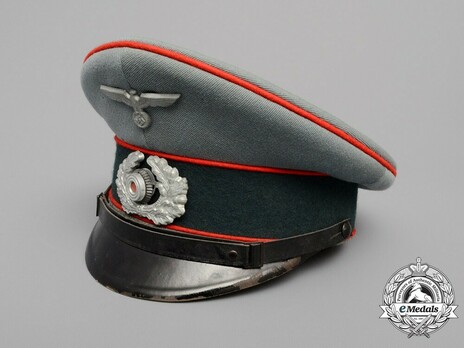
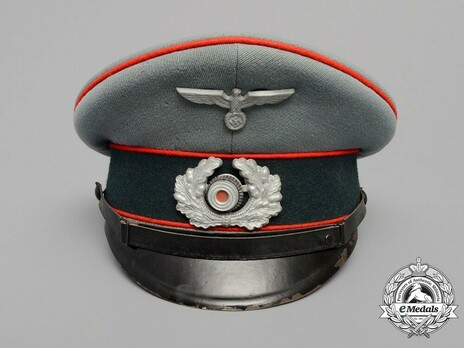
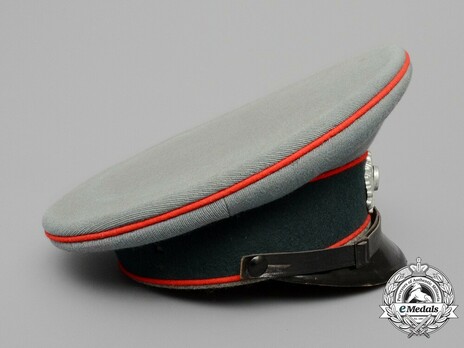
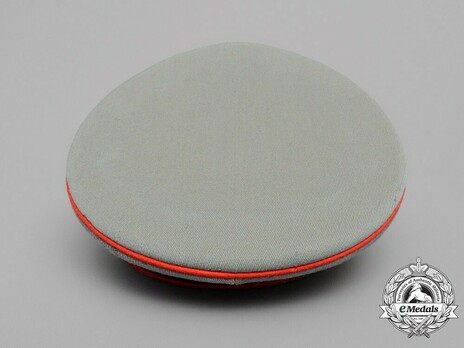
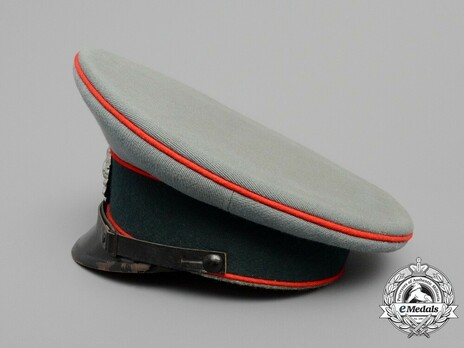
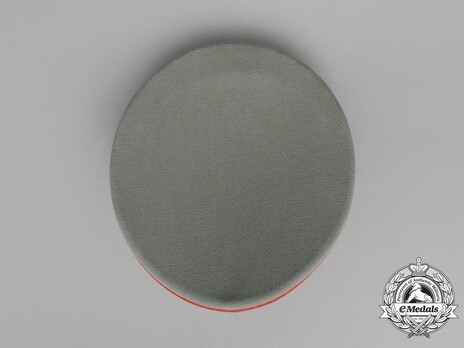
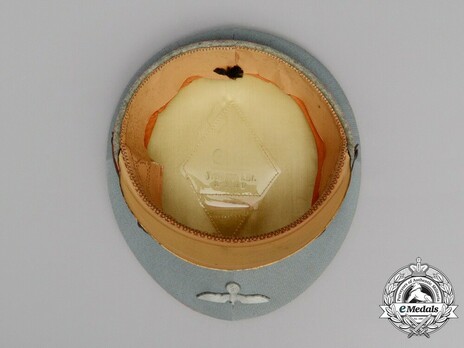
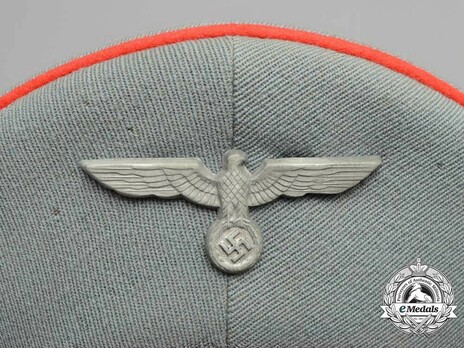
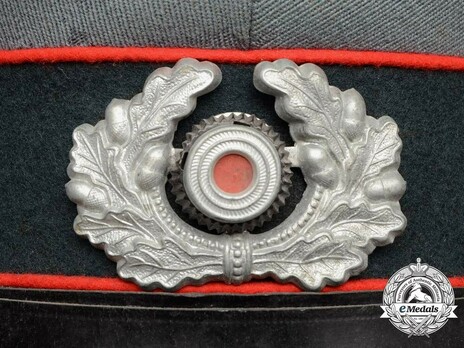
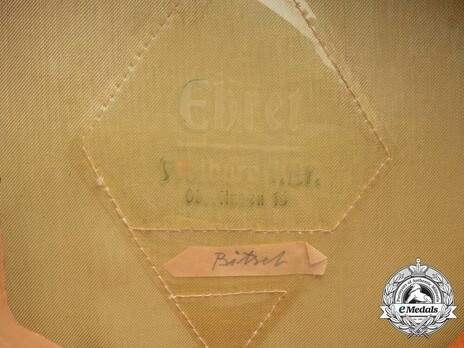
Estimated market value:
This is a typical Wehrmacht Flak/Artillery Parade Waffenrock NCO’s visor cap constructed of fine quality Mützen-Trikot (cap tricot) with a fine twill weave (Körperbindung) pattern of parallel running ribs. The cap features a traditional high peak crown with bright scarlet-red piping running along the crown of the cap, as well as the top and bottom edge of the 43 mm wide dark green “Flaschengrün” coloured wool cap band. The visor is made of Vulkanfiber, and is lacquered black on the obverse, and coloured tan on the reverse, with a molded raised ridge running along the brim. The three-piece glossy black leather chin cord rests upon the visor, with black magnetic length-adjustment buckles on either side, and is fastened to the cap via two black-finished magnetic buttons. The insignia on the cap consist of a well-detailed eagle in stamped zink, measuring 63 mm x 26 mm. The eagle does not appear original to the cap, however, the eagle is period-original. Attached directly below the eagle is an open-ended wreath in silvered aluminum, with a metal tri-colour cockade consisting of metal black and silver rings, as well as a red felt core, measuring 62 mm x 39 mm. The inside of the cap is lined with pale yellow rayon by the crown, with rust-brown rayon on the sides. The cap also features a beige-coloured faux leather sweatband that is perforated towards the front, with a white cotton sweatband underneath the liner towards the front third of the cap. The crown portion of the cap also features a clear celluloid diamond that is stamped “”Ehret - Freiburg i. Br. Oberlinden 15” in black gothic lettering, as well as a small paper note labelled “Bitsel” in penciled handwriting. The cap measures 271 mm x231 mm at the crown, with a 65 mm diameter opening. Overall, it displays light period wear, with some thinning in the fabric underneath the crown, with light to moderate mothing towards the rear and right side of the cap band, as well as scattered on the trikot twill weave surfaces. The eagle insignia has lost its silvering, and is not original to the cap, and with the cockade loose with one fastener clip broken off. Overall better than very fine condition.
The Visor Cap was not a newly developed garment. It had already been well established in the 1920s. The pattern that was used during the Third Reich was established in 1931.
The cap was made of a field grey-green woolen top, a dark green cap band, and a black leather visor. There are three bands of piping, one along the top, one above the cap band, and one below it. Piping is in the colour of the branch type of the wearer, except for General ranks, who had gold-coloured piping.
Enlisted men and NCOs wore a black leather chinstrap. Officers up to General ranks wore a silver-coloured chincord, whereas General ranks wore a gold-coloured one.
The cap has an eagle insignia on the front of the cap band and below it a national cockade in red, white, and black with a circle of oak leaves.
Prices will vary significantly depending on the branch, since caps of certain branches are rare.
Branch colours on German Heer headgear was as follows:
Black was worn by Engineer units.
Black/White was worn by Panzer Engineers.
Copper Brown was worn by Motorcycle personnel.
Light Brown was worn by Signals units until 1936, and by Construction troops.
Carmine was worn by the Führer Staff, General Staff Officers, Staff Officers of the Supreme Command of the Army, and all Veterinary branches.
Bordeaux Red was worn by Smoke & Chemical personnel.
Wine Red was worn by Judicial officials.
Bright Red was worn by Generals, Artillery units, and Ordnance Officers (until 1944).
Rose or Pink was worn by all Armored units (including Panzer troops, and Schützen Brigade Staff).
Orange was worn by Recruiting personnel, Ordnance troops, Ordnance Officers (since 1944), and Field Gendarmerie units.
Bright yellow was worn by Cavalry units, and Light Division Staff.
Lemon yellow was worn by Signal units.
White was worn by Infantry units.
Light Grey was worn by Propaganda personnel.
Grey-Blue was worn by Sonderführer (Specialist Officers).
Violet was worn by Chaplains and Field Bishops.
Cornflower Blue was worn by Medical units, and Supply units.
Bright Blue was worn by Transport troops.
Bright Green was worn by Jäger and Mountain units.
Grass Green was worn by Panzer Grenadier units (Armored Infantry).
Dark Green was worn by Administrative personnel.

Comments
Sign in to comment and reply.


Scroll Top